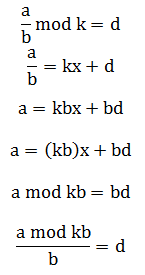此文章可以使用目录功能哟↑(点击上方[+])
 HDU 5895 Mathematician QSC
HDU 5895 Mathematician QSC
Accept: 0 Submit: 0
Time Limit: 2000/1000 MS (Java/Others) Memory Limit: 131072/131072 K (Java/Others)
 Problem Description
Problem Description
QSC dream of becoming a mathematician, he believes that everything in this world has a mathematical law.
Through unremitting efforts, one day he finally found the QSC sequence, it is a very magical sequence, can be calculated by a series of calculations to predict the results of a course of a semester of a student.
This sequence is such like that, first of all,f(0)=0,f(1)=1,f(n)=f(n−2)+2∗f(n−1)(n≥2)Then the definition of the QSC sequence is

QSC sequence published caused a sensation, after a number of students to find out the results of the prediction is very accurate, the shortcoming is the complex calculation. As clever as you are, can you write a program to predict the mark?
 Input
Input
First line is an integer T(1≤T≤1000).
The next T lines were given n, y, x, s, respectively.
n、x is 8 bits decimal integer, for example, 00001234.
y is 4 bits decimal integer, for example, 1234.
n、x、y are not negetive.
1≤s≤100000000
 Output
Output
For each test case the output is only one integer number ans in a line.
 Sample Input
Sample Input
20160830 2016 12345678 666
20101010 2014 03030303 333
 Sample Output
Sample Output
317
 Problem Idea
Problem Idea
解题思路:
【题意】
已知f(0)=0,f(1)=1,f(n)=f(n−2)+2∗f(n−1)(n≥2)
给你n,y,x,s的值
求
【类型】
矩阵乘法+循环节降幂+除法取模小技巧+快速幂
【分析】
一开始想简单了,对于a^x mod p这种形式的直接用欧拉定理的数论定理降幂了
结果可想而知,肯定错,因为题目并没有保证gcd(x,s+1)=1,而欧拉定理的数论定理是明确规定的
所以得另谋出路
那么网上提供了一种指数循环节降幂的方法
具体证明可以自行从网上找一找
有了这种降幂的方法之后,我们要分析一下如何求g(n)
由于f(0)=0,f(1)=1,f(n)=f(n−2)+2∗f(n−1)(n≥2)
∴f(0)=0,f(1)=1,f(2)=2,f(3)=5,f(4)=12,f(5)=29,f(6)=70……
∴g(0)=f(0)*f(0)=0=f(0)*f(1)/2
g(1)=g(0)+f(1)*f(1)=1=f(1)*f(2)/2
g(2)=g(1)+f(2)*f(2)=5=f(2)*f(3)/2
g(3)=g(2)+f(3)*f(3)=30=f(3)*f(4)/2
g(4)=g(3)+f(4)*f(4)=174=f(4)*f(5)/2
g(5)=g(4)+f(5)*f(5)=1015=f(5)*f(6)/2
……
可得,g(n)=f(n)*f(n+1)/2
这个是很好发现的
如果你发现不了的话,可以直接丢到OEIS里搜一下
然后,要求出g(n*y),就需要先求出f(n*y)和f(n*y+1)
这时,我们可以考虑用矩阵乘法
构造矩阵
套一下矩阵快速幂的模板就可以求出f(n*y)和f(n*y+1)
然后要求g(n)还有个除以2的操作,显然除法取模要用逆元
但考虑到2与模数不一定互质,无法用乘法逆元,所以要采用一点小技巧转化一下
这样我们就可以得到简化好的最终的指数部分
这样我们用快速幂就可以求x的幂次对(s+1)取模了
【时间复杂度&&优化】
O(1ogn)
题目链接→HDU 5895 Mathematician QSC
 Source Code
Source Code
/*Sherlock and Watson and Adler*/
#pragma comment(linker, "/STACK:1024000000,1024000000")
#include<stdio.h>
#include<string.h>
#include<stdlib.h>
#include<queue>
#include<stack>
#include<math.h>
#include<vector>
#include<map>
#include<set>
#include<bitset>
#include<cmath>
#include<complex>
#include<string>
#include<algorithm>
#include<iostream>
#define eps 1e-9
#define LL long long
#define PI acos(-1.0)
#define bitnum(a) __builtin_popcount(a)
using namespace std;
const int N = 2;
const int M = 100005;
const int inf = 1000000007;
//const int mod = 1000000007;
typedef struct node
{
__int64 a[N][N];
void Init()
{
memset(a,0,sizeof(a));
for(int i=0;i<N;i++)
a[i][i]=1;
}
}matrix;
int mod;
bool flag;
matrix mul(matrix a,matrix b)//矩阵乘法
{
matrix ans;
for(int i=0;i<N;i++)
for(int j=0;j<N;j++)
{
ans.a[i][j]=0;
for(int k=0;k<N;k++)
{
ans.a[i][j]+=a.a[i][k]*b.a[k][j];
if(ans.a[i][j]>mod)
ans.a[i][j]=ans.a[i][j]%mod+mod;
}
}
return ans;
}
matrix pow(matrix a,__int64 n)//求a^n
{
matrix ans;
ans.Init();
while(n)
{
if(n%2){
ans=mul(ans,a);
}
n/=2;
a=mul(a,a);
}
return ans;
}
int euler(int n)
{
int ans=1,i;
for(i=2;i*i<=n;i++)
{
if(n%i==0)
{
n/=i;
ans*=i-1;
while(n%i==0)
{
n/=i;
ans*=i;
}
}
}
if(n>1)
ans*=n-1;
return ans;
}
__int64 Quick_Mod(__int64 a, __int64 b, __int64 m)
{
__int64 res = 1,term = a % m;
while(b)
{
if(b & 1) res = (res * term) % m;
term = (term * term) % m;
b >>= 1;
}
return res%m;
}
int main()
{
int t,n,y,x,s;
__int64 z;
matrix ans,k;
scanf("%d",&t);
while(t--)
{
k.a[0][0]=0;k.a[0][1]=1;
k.a[1][0]=1;k.a[1][1]=2;
ans.a[0][0]=0;ans.a[0][1]=0;
ans.a[1][0]=1;ans.a[1][1]=0;
scanf("%d%d%d%d",&n,&y,&x,&s);
mod=2*euler(s+1);
z=n;z*=y;
ans=mul(pow(k,z),ans);
z=(ans.a[0][0]*ans.a[1][0])%mod+mod;
z=(z%mod+mod)/2;
printf("%I64d\n",Quick_Mod(x,z,s+1));
}
return 0;
}






 本文介绍了解决HDU5895问题的方法,该问题涉及利用数学序列预测学生学期成绩。通过矩阵乘法、循环节降幂等技术手段进行解答。
本文介绍了解决HDU5895问题的方法,该问题涉及利用数学序列预测学生学期成绩。通过矩阵乘法、循环节降幂等技术手段进行解答。





















 被折叠的 条评论
为什么被折叠?
被折叠的 条评论
为什么被折叠?








